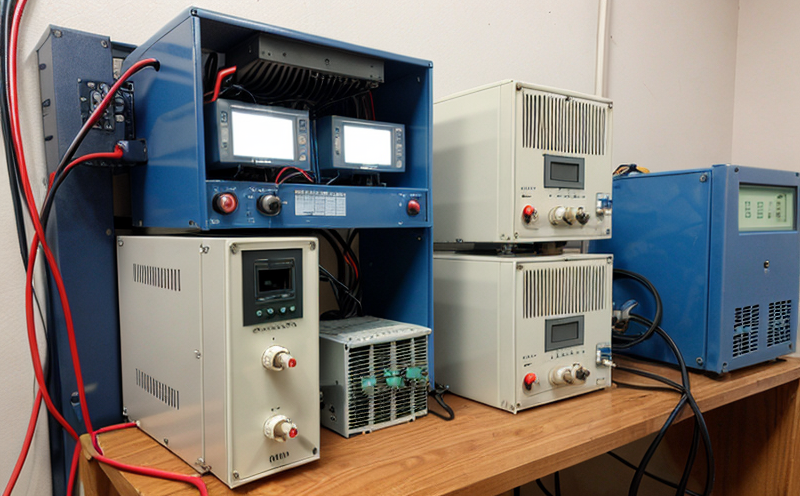IEC 60044 Current Transformer Accuracy Testing
The International Electrotechnical Commission (IEC) standard IEC 60044-8:1999, "Current Transformers—Particular Requirements for the Use of Low-power Factor Secondary Standard Transformers," is a critical specification in ensuring the accuracy and reliability of current transformers used across various industries, including railway and transportation. These transformers are essential components that convert high primary currents to lower secondary currents for accurate measurement by protective relays and monitoring systems.
The standard defines the requirements for low-power-factor current transformers (LPFC) which are specifically designed for use in protection applications where the power factor is less than 0.2. LPFCs are widely used in railway substations, traction substations, and other critical infrastructure to ensure that protective relays can accurately measure currents under various conditions.
The testing process outlined in IEC 60044-8 involves a series of steps aimed at ensuring the accuracy of LPFCs. The test setup includes a precision current source, a standard transformer, and measuring instruments such as digital multimeters or data acquisition systems capable of capturing very low power factor conditions.
The testing process begins with the primary winding being subjected to a sinusoidal alternating current (AC) at specified levels. The secondary side is then connected to the standard transformer, which provides reference values for comparison against the LPFC under test. The accuracy is evaluated by comparing the measured values from the LPFC against these reference values.
The tests are conducted over a range of power factors and temperatures specified in the standard, ensuring that the LPFC operates within its designed performance envelope. The results provide critical insights into the transformer's ability to maintain accuracy under varying conditions encountered in real-world applications. Proper testing not only ensures compliance with regulatory requirements but also enhances system reliability by identifying potential weaknesses or discrepancies early on.
Understanding these nuances is crucial for quality managers and R&D engineers responsible for ensuring that electrical systems meet stringent performance criteria. By adhering to the rigorous standards set forth in IEC 60044-8, manufacturers can demonstrate their commitment to delivering high-quality products capable of withstanding challenging operational environments.
The importance of this testing cannot be overstated, especially considering the critical role that current transformers play in safeguarding railway and transportation systems from potential hazards. Accurate measurement ensures that protective relays function correctly during fault conditions, thereby minimizing risks associated with electrical disturbances or failures.
Industry Applications
The application of IEC 60044-8 Current Transformer Accuracy Testing extends beyond just the laboratory; it plays a vital role in ensuring the safety and efficiency of railway and transportation systems. In this context, current transformers are used extensively for both traction substations (which supply power to electric locomotives) and traction power supply equipment.
- Traction Substations: Here, LPFCs help protect against overcurrent conditions that could arise due to faults in the overhead contact system or rolling stock. The accuracy of these transformers ensures reliable operation of protective relays, which trigger circuit breakers when necessary.
- Traction Power Supply Equipment: In this setting, current transformers provide accurate measurements for monitoring and controlling power flow within the substation. This helps optimize energy usage while maintaining system stability.
The railway sector relies heavily on electrical systems to support its operations, making it imperative that all components function reliably under diverse conditions. By adhering to rigorous testing standards like IEC 60044-8, stakeholders can rest assured that the equipment they deploy is capable of performing consistently across various scenarios.
For quality managers and compliance officers, ensuring adherence to such standards represents a proactive approach towards maintaining industry integrity and safety standards. It also supports continuous improvement efforts aimed at enhancing overall system reliability.
Why Choose This Test
Selecting IEC 60044-8 Current Transformer Accuracy Testing for your railway and transportation projects offers several compelling advantages:
- Regulatory Compliance: Adhering to international standards ensures that your products meet stringent regulatory requirements, facilitating easier market access.
- Innovation & Quality Assurance: Rigorous testing promotes innovation by identifying areas for improvement and maintaining high-quality output.
- Enhanced Reliability: By accurately measuring currents under challenging conditions, you enhance the reliability of protective relays and monitoring systems used in critical infrastructure.
- Cost Efficiency: Early identification of issues through thorough testing can prevent costly downtime or rework later on.
The process involves meticulous attention to detail, ensuring that even minor discrepancies are caught before they become significant problems. This approach fosters a culture of excellence within your organization and builds trust among stakeholders.
Moreover, choosing this test allows you to stay ahead of industry trends by continuously evaluating the performance of your products against evolving standards. As technology advances, so too do our testing methodologies, ensuring that you remain competitive in an ever-changing market landscape.





